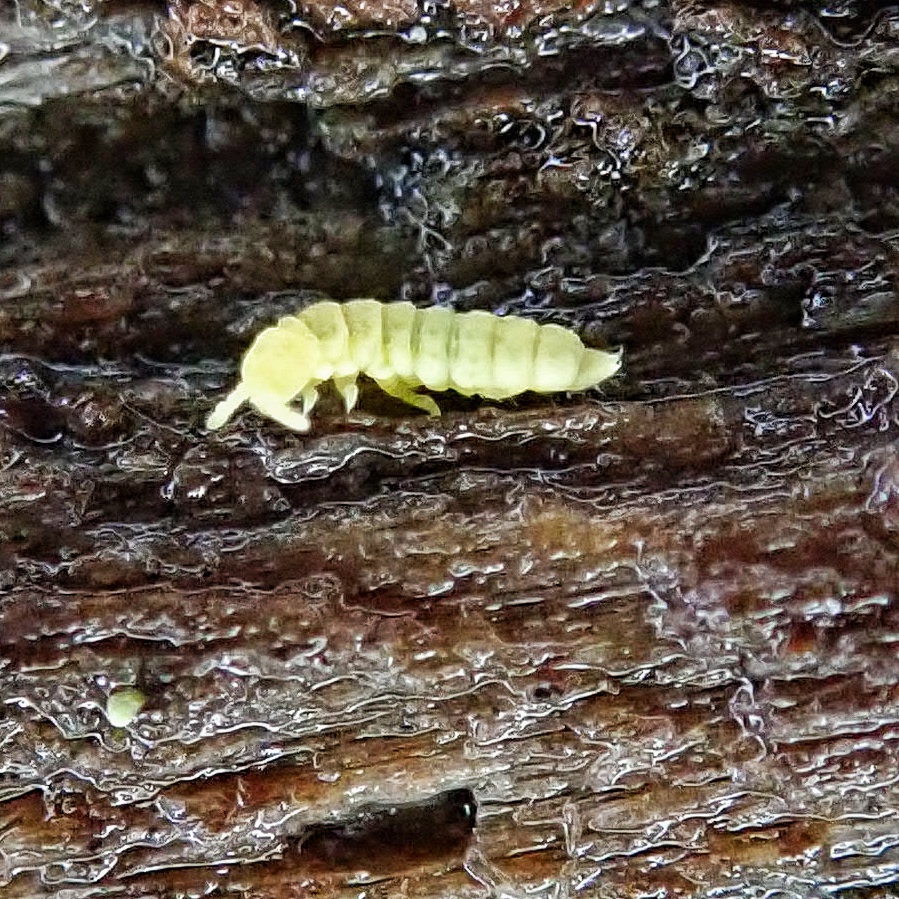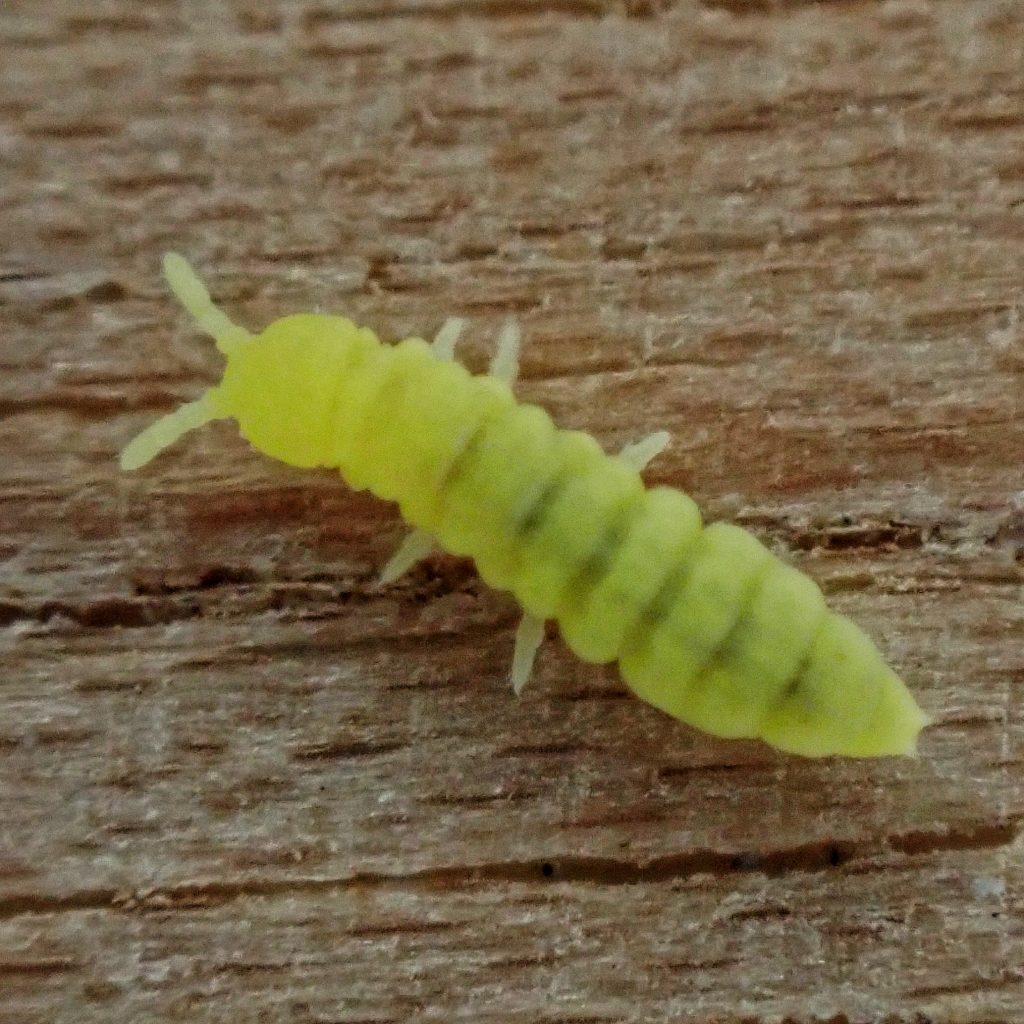
So, let’s just get this out of the way first: Golden Snowfleas are not fleas (class Insecta, order Siphonaptera). They are instead springtails (class Collembola) in the order Poduromorpha. And while many springtails do seem to jump, they do so by virtue of a sort of spring loaded tail called a furcula, and not by using very strong hind legs like fleas. However, Hymenaphorura cocklei do not have a furcula, do not jump, and do not feed on vertebrate blood, so there is absolutely nothing flea like about them, except their tiny size. Yet another in the long list of reasons I am not fond of identifying organisms by their common name! At least Hypogastrura nivicola, which is also called a snowflea, has a furcula and appears to jump.
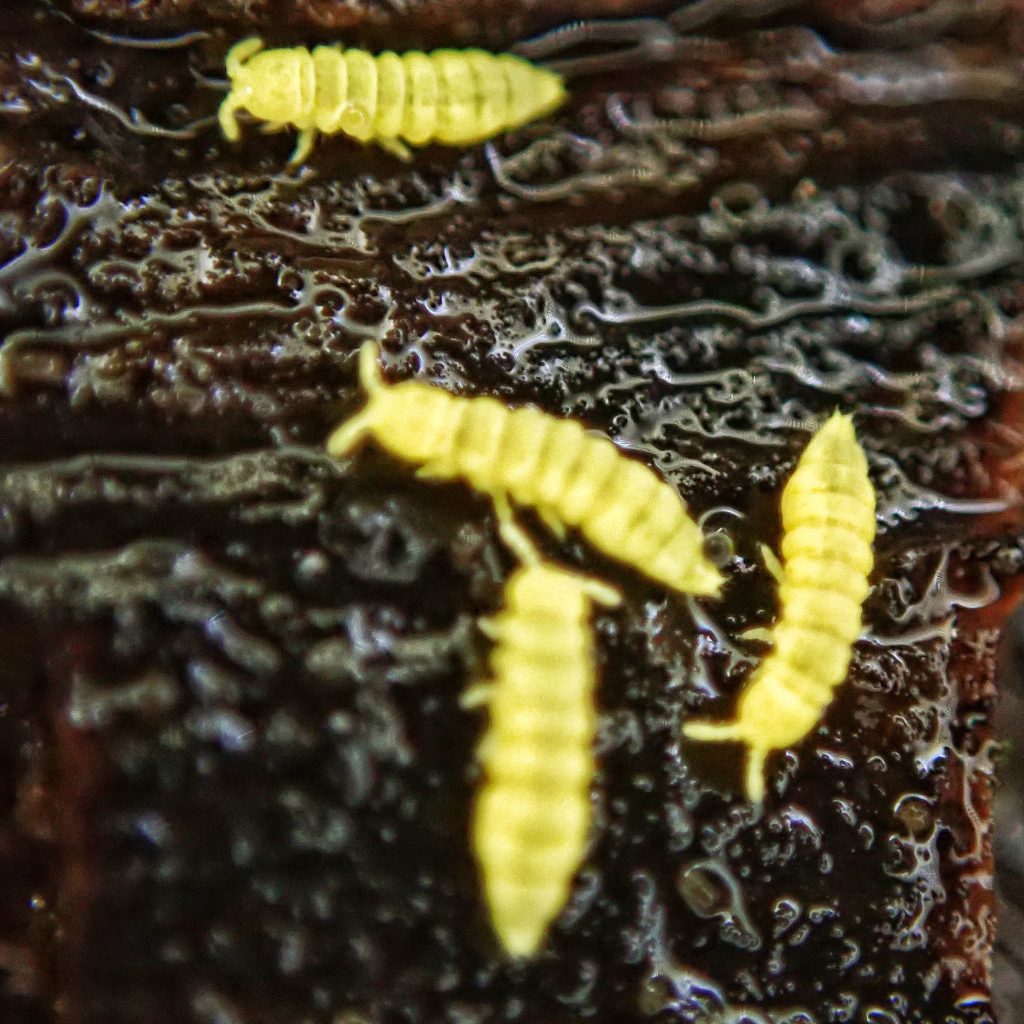
Thanks to a tip from my friend Andy Harmsen I finally found these beautiful creatures on Monday, during my first trip to the Cooper Mountain Natural Area in Beaverton, Oregon. This is a uniquely diverse habitat, and an especially welcome find in the middle of a major metropolitan area. This species is only active at lower elevations during the late fall and winter, and Andy has seen large aggregations of this species at Cooper Mountain NA around New Years Day, but on the day I was there the largest group I found contained only six springtails. It is thought that these aggregations are for breeding purposes. That they are able to be active in mid winter, and often on the surface of the snow, is due to a glycine rich protein in their tissues that acts as an antifreeze, and allows them to be about in sub-zero temperatures.
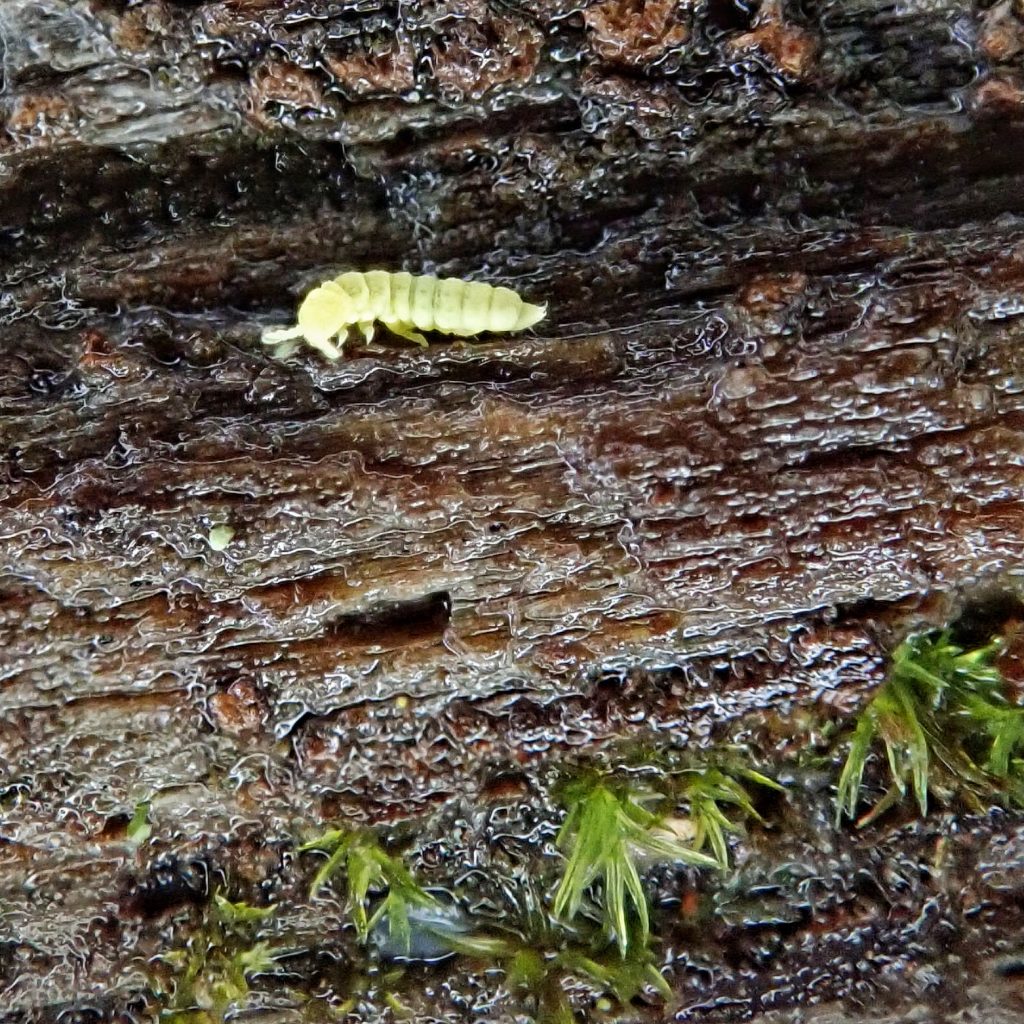
Since they lack the escape potential a furcula provides, Hymenaphorura cocklei (and other members of the family Onychiuridae) have pores on many segments called pseudocelli (an odd term since they have nothing to do with vision for these blind creatures) through which defense chemicals may be deployed. Laboratory tests have shown these chemicals to repel invertebrate predators (and other springtails) and they are probably effective against at least some vertebrates, based on the seemingly aposematic coloring, and the fact that they congregate in teeming masses that would probably otherwise be very attractive to predators.
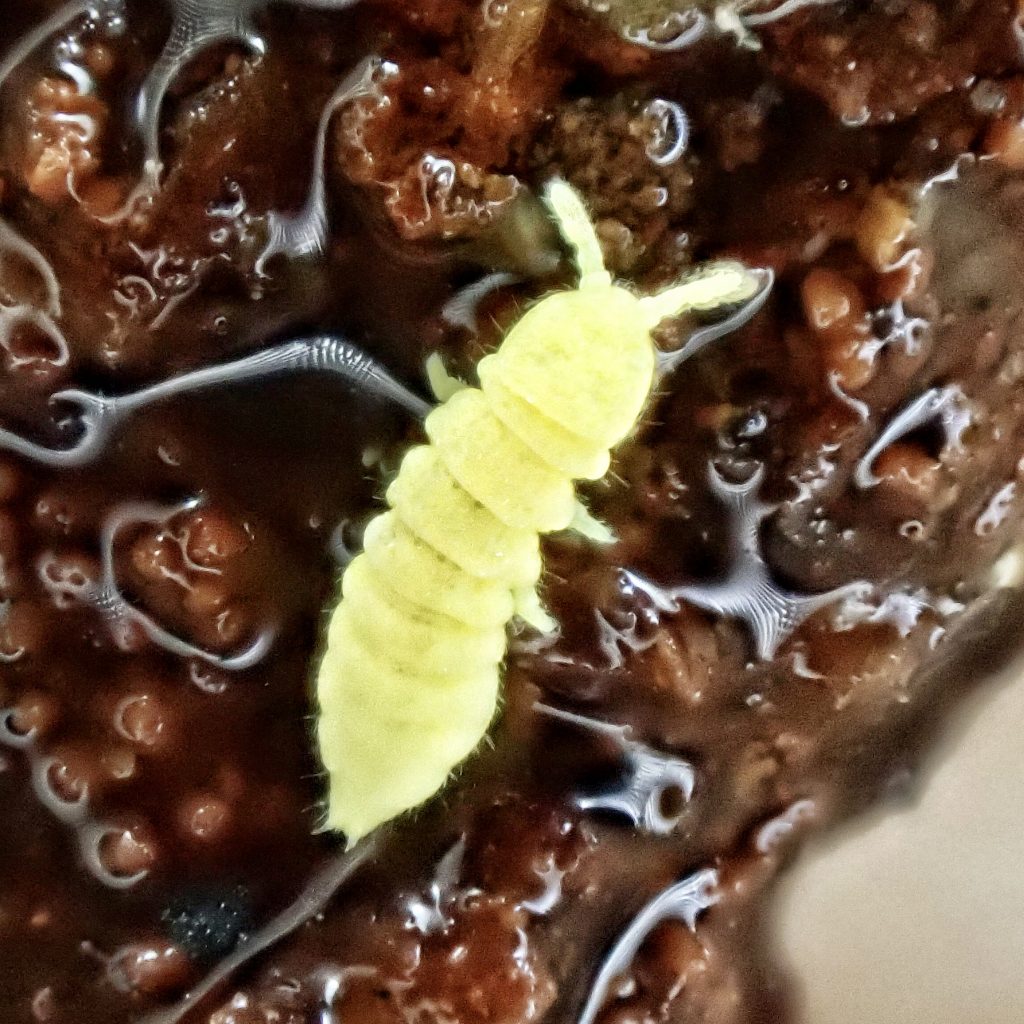
I love my TG 5, but it has limitations. For one thing the in-camera focus stacking doesn’t work very well if the subject won’t stop moving, like these springtails. I end up with ghost images, which can be cool, but they’re useless for this project. Also, for reasons I don’t understand as someone who is not really a camera guy, on the macro setting my f-stop is always 2.4, which leaves a very shallow depth of field, so if the focus stacking isn’t functional most of my subject ends up out of focus. And when the subject is only 2mm long, like these springtails, I have to crop the heck out of the photo, even at full magnification, which exacerbates any focus issues. So that is why these are barely decent shots. However, I realized that they weren’t turning out well, so I thought I’d try doing a video with my phone. Still not great, but I think it gives a better feel for these cool little critters. My friend Andy Harmsen showed me how to display it here. Please let me know what you think!
Description-Tiny (1.7-2.3mm) bright lemon yellow springtail with 2 anal spines, no eyes, and no furcula; antennae about 3/4 of the length of the head.
Similar species-In our region there are no other bright yellow springtails that lack a furcula and are very active in winter.
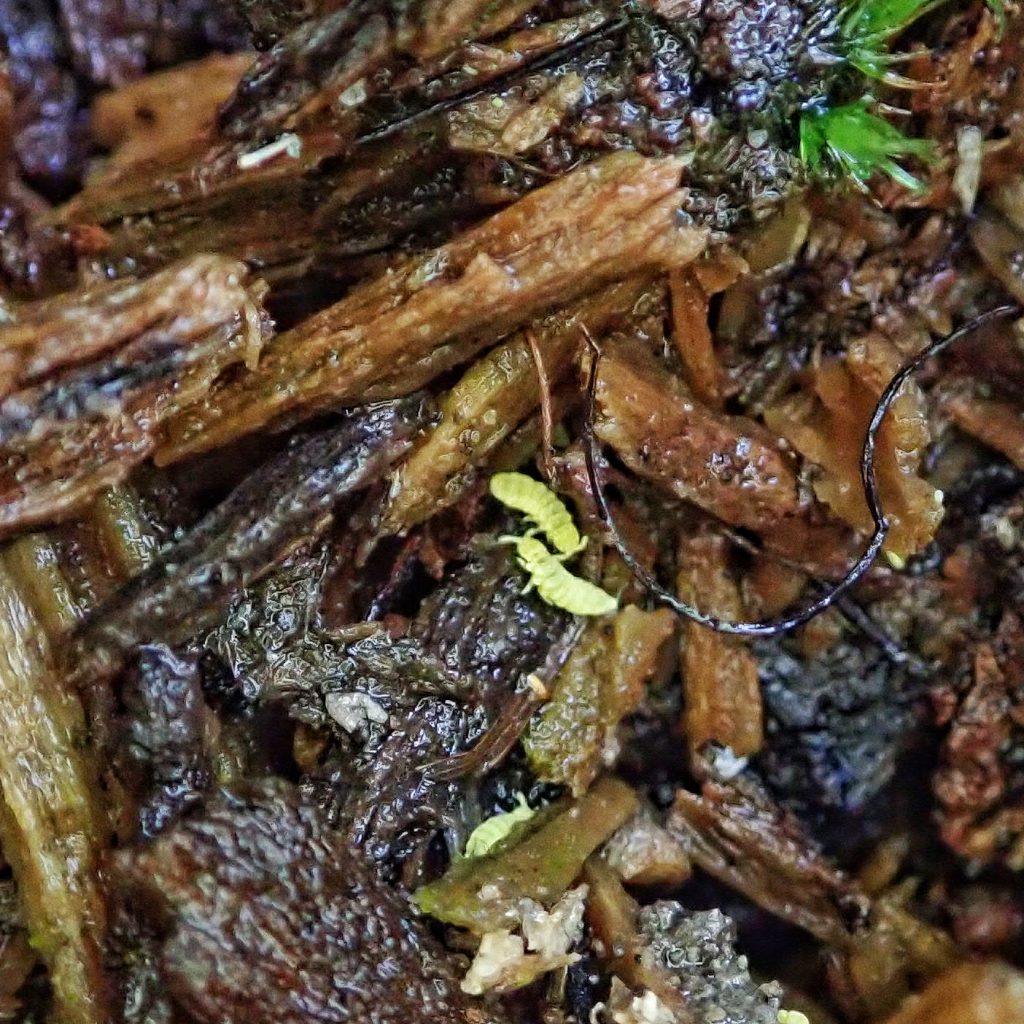
Habitat-Under logs, bark, leaf litter, and sometimes found in large aggregations, often on snow.
Range-Western North America; found west of the Cascades and in montane locales in our region.
Eats-Soil decomposers; probably also consumes some fungi, lichens, and possibly Myxogastria.
Eaten by-Probably by insectivores of all classes, although their defensive chemicals are apparently distasteful, and can be toxic to ants and other small invertebrates.
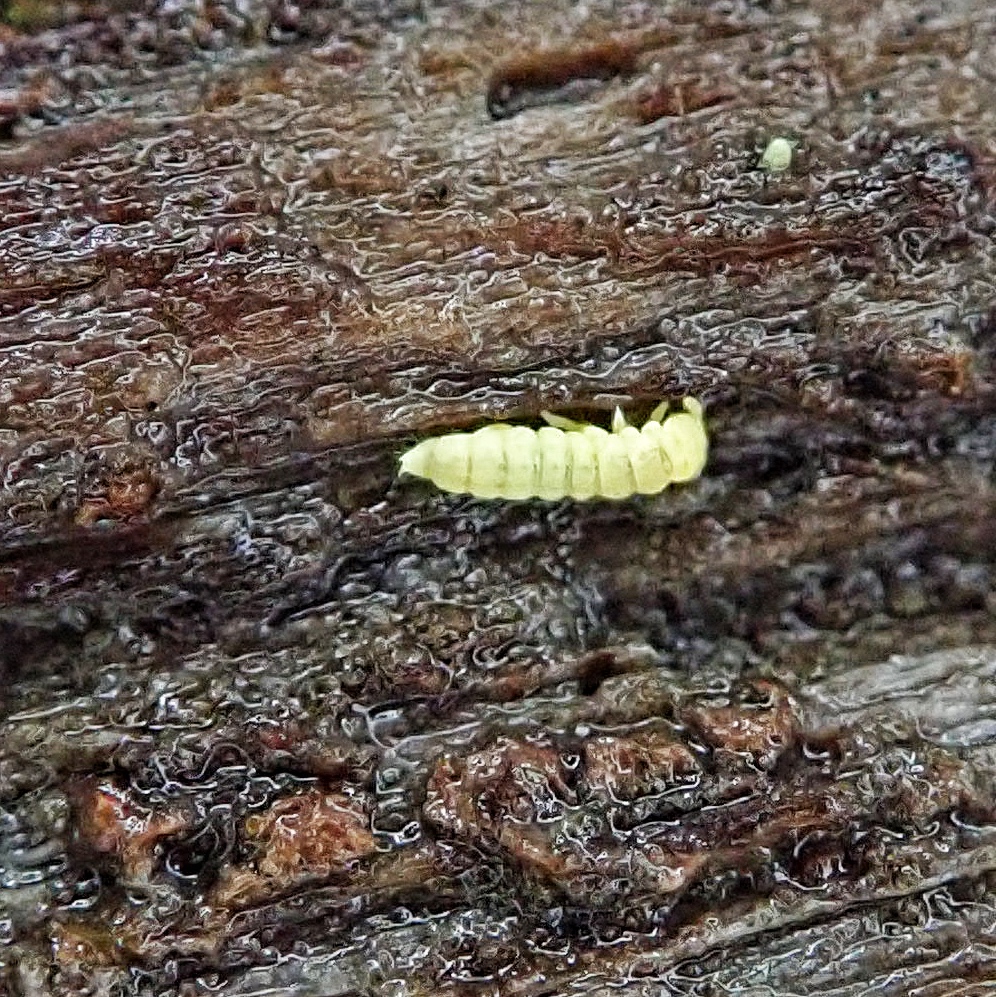
Adults active-Adults only appear in winter at lower elevations, may be found later in the year as snow melts in higher elevations.
Life cycle-Mostly unknown; may build nests like other Hymenaphorura spp.
Etymology of names–Hymenaphorura is from the Greek for ‘membrane’, plus -aphorura, a common suffix within this family for which I can find no satisfactory translation, and Bagnall’s original description of this genus was no help. The specific epithet cocklei honors J.W. Cockle of Kaslo, .B.C., “a hotelier and dynamic amateur entomologist who flourished in the late 1800s and early 1900s”, (Cannings/Scudder; 2005), the man who first collected this species.
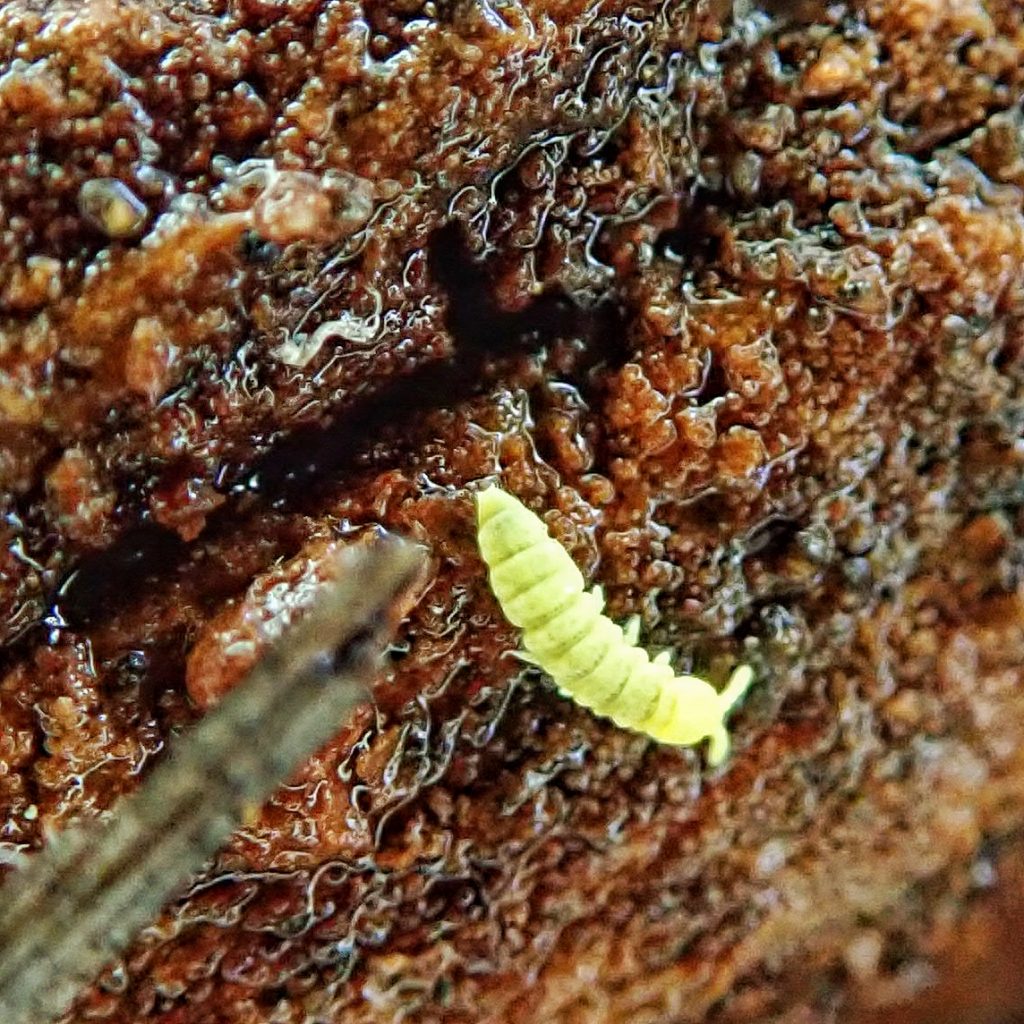
http://linnet.geog.ubc.ca/efauna/Atlas/Atlas.aspx?sciname=Onychiurus%20cocklei
https://bugguide.net/node/view/246788
http://www.thprd.org/parks-and-trails/detail/cooper-mountain-nature-park
